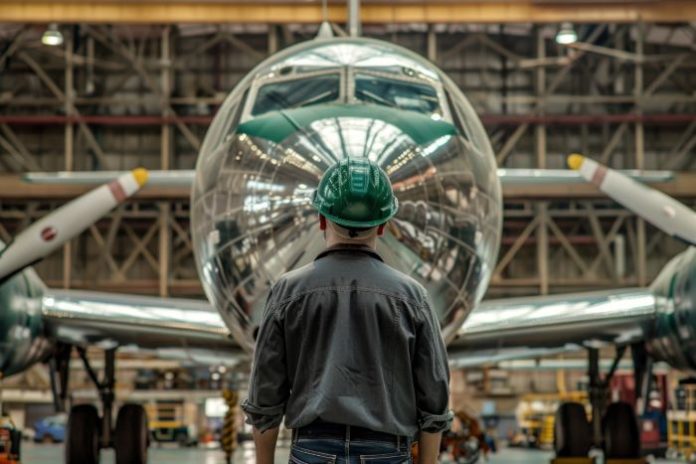In an era where aviation accidents claim lives and leave families seeking justice, emerging technologies like artificial intelligence (AI), blockchain, and data analytics are reshaping both prevention and accountability. These tools not only enhance flight safety through predictive maintenance and real-time monitoring but also streamline wrongful death claims by providing tamper-proof evidence and faster investigations. For families navigating the aftermath of a crash, understanding how these innovations work can empower informed decisions, ensuring negligent parties— from airlines to manufacturers—are held responsible. This article explores how AI and blockchain transform aviation wrongful death claims, offering precision, transparency, and efficiency in the field of aviation safety long plagued by delays and disputes.
Table of contents
The Role of AI in Preventing Aviation Accidents
Aviation safety begins with prevention, and AI is at the forefront. Machine learning algorithms analyze vast datasets from flight logs, weather patterns, and sensor data to predict potential failures. For instance, AI-powered predictive analytics can detect engine anomalies up to 72 hours before a malfunction, reducing crash risks by 20–30% according to a 2024 Boeing report. In wrongful death claims, this technology provides critical evidence: AI simulations reconstruct crash scenarios with 95% accuracy, helping an NYC aviation accident lawyer prove negligence in areas like pilot error or maintenance lapses. These simulations process black box data in minutes, enabling faster case-building compared to traditional methods.
For families, AI tools democratize access to justice. Cloud-based platforms process black box data in minutes, not months, allowing lawyers to build cases swiftly. In New York, where aviation hubs like JFK see frequent incidents, these systems integrate with federal databases to comply with NTSB guidelines, ensuring claims cover lost income, funeral costs, and emotional damages without jurisdictional delays.
Blockchain for Immutable Evidence in Claims
Blockchain’s decentralized ledger ensures evidence integrity, a game-changer for aviation wrongful death lawsuits. By timestamping and encrypting maintenance records, flight manifests, and supply chain data, blockchain prevents tampering—essential when manufacturers or airlines dispute fault. A 2025 Deloitte study highlights how blockchain reduces claim disputes by 40% in transportation sectors, as it creates an unalterable audit trail from part production to takeoff.
In practice, this means families can trace faulty components back to vendors via smart contracts on the blockchain. For compensation—ranging from medical bills to loss of companionship—courts increasingly accept blockchain-verified documents, speeding settlements. Under New York’s two-year statute of limitations, blockchain timestamps help meet deadlines, even for international cases under the Montreal Convention, turning what was once a paperwork nightmare into a streamlined process.
Drones and IoT: Real-Time Data for Investigations
Drones equipped with LiDAR and high-res cameras revolutionize crash site analysis, capturing 3D models in hours rather than days. Integrated with IoT sensors on aircraft, these devices provide real-time telemetry during flights, flagging issues like structural fatigue. A 2024 FAA initiative uses IoT for continuous monitoring, cutting human error-related accidents by 25%.
For wrongful death claims, this data fuels AI-driven reconstructions, proving liability among pilots, air traffic controllers, or contractors. Families benefit from faster NTSB alignments, as drone footage preserves scenes before weather or contamination alters them. Compensation calculations become precise, factoring in lost future earnings via IoT-tracked career data, easing financial burdens during grief.
Overcoming Aviation Safety Challenges with Tech-Integrated Legal Strategies
Aviation claims face hurdles like multi-party liability and lengthy probes, but tech addresses them head-on. AI legal research tools scan federal aviation regs and state laws, clarifying who files—typically the estate’s personal representative—and what damages apply, from pain and suffering to parental guidance loss. Cybersecurity features in these platforms protect sensitive data in aviation safety claims, countering hacker threats in high-stakes cases.
Emotional tolls ease too: Virtual reality (VR) simulations let families review evidence without reliving trauma, while chatbots offer 24/7 claim status updates. In complex scenarios involving third parties like fuel suppliers, big data analytics correlate events, strengthening cases against deep-pocketed defendants.
Practical Steps for Families Embracing Tech
Start by securing digital records: Use encrypted cloud storage for flight docs and expenses. Engage tech-savvy attorneys early to deploy AI for initial assessments. Track deadlines with automated calendars synced to blockchain alerts. For aviation hotspots, explore apps integrating NTSB feeds for proactive monitoring.
The Future of Justice in the Skies
AI, blockchain, drones, and IoT aren’t just buzzwords—they’re catalysts for safer skies and fairer claims. By preventing accidents and accelerating justice, these technologies honor the lost while supporting survivors. As aviation safety evolves, so must our approach to accountability, ensuring no family fights alone.











